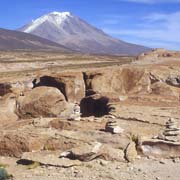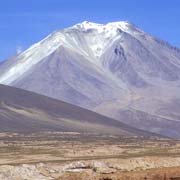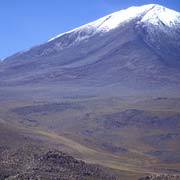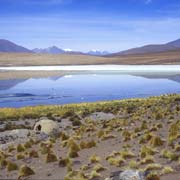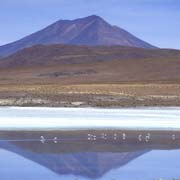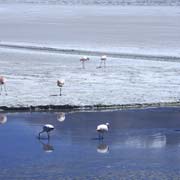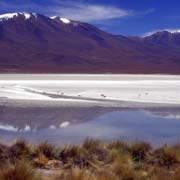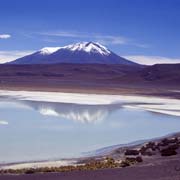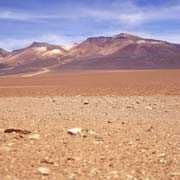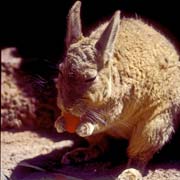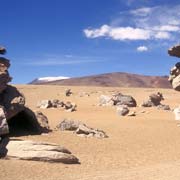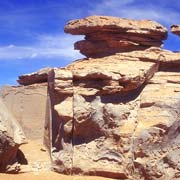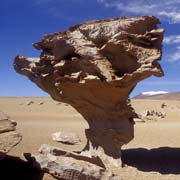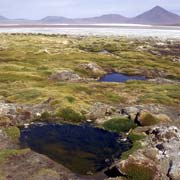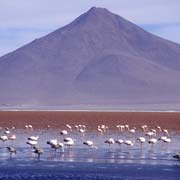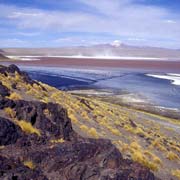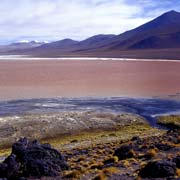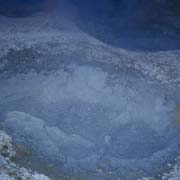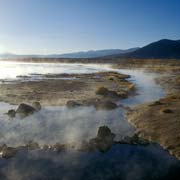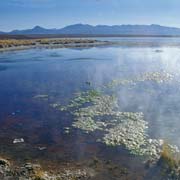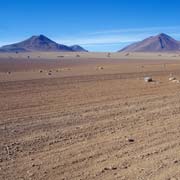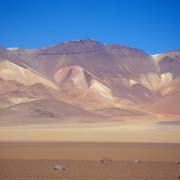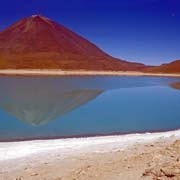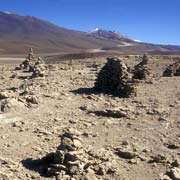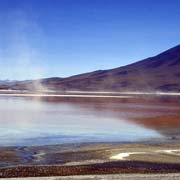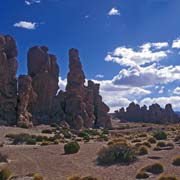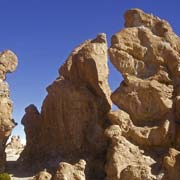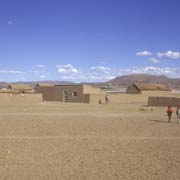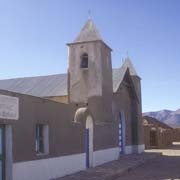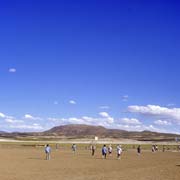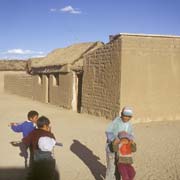Photos of Bolivia's Far South West, Bolivia
Bolivia's Far South West
In the far southwest of Bolivia, on the high Altiplano at the height of over 4,000 metres, is a flat region of spectacular, surreal and treeless landscapes, offset by hills and high volcanoes. It is on the border with Chile: Mt Ollagüe is a huge andesite stratovolcano in the Andes, with an elevation of 5,868 metres.
you may then send it as a postcard if you wish.
It is a remote and very sparsely populated region. There are various lakes, the breeding ground of flamingoes, and the bleak Eduardo Avaroa Andean Fauna National Reserve with its desert landscapes. Weird rocks, blasted by the sand into fantastic shapes, like the “Arbol de Piedra” (Stone Tree), are spectacular examples of wind erosion. The only vegetation seems to be a type of moss called “Yarreta”. The “vizcacha”, a long-tailed rodent related to the chinchilla, is native to this land.
In the remotest southwest of Bolivia, there are spectacular lakes further on; the Laguna Colorada is a salt lake at 4,278 metres, coloured red (caused by red sediments and the pigmentation of some algae) about 25 kilometres from the Chilean border. It has large numbers of the rare James’ flamingoes inhabiting its shores. Around 50 kilometres further south is the geothermal area of Sol de Mañana at an elevation of approximately 4,800 metres, with its bubbling mud pools, geysers and fumaroles. Steam rises from the thermal creeks nearby, especially in the early morning when the air can be bitterly cold.



